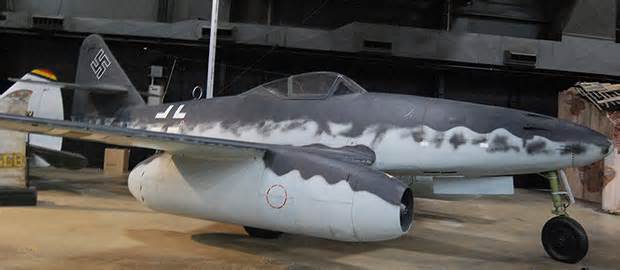When the war broke out on Sept. 1, 1939 with Germany’s invasion of Poland, few could have expected the technological leaps that would occur over the next six years. Military historians have largely focused on the advancement in small arms, and the development of superior tanks and other killing machines, and for good reason.
World War II was the first conflict to see the use of jet aircraft, although it wasn’t until the Korean War that jets actually went head-to-head against one another. WWII saw the introduction of the assault rifle and notably the missile.
“The importance of the Manhattan Project as leaps forward in science and technology cannot be overstated,” said Dr. David J. Ulbrich, associate professor of military history at Norwich University.
“The United States needed to win the race against Japan and Germany to create an atomic bomb,” Ulbrich told TechNewsWorld.
“This entire project cost an estimated US$2 billion in 1940s dollars — which amounted to nearly one percent of all American expenditures of $300 billion during the Second World War,” explained Ulbrich.
The technology used to develop the bomb was notable, as well as the international effort to create it.
“The Manhattan Project was a truly monumental and historic endeavor — the collaboration between governments, industry, and the science community, with the pointed goal of developing nuclear weapons during World War II, was unprecedented at the time, and actually spurred R&D in energy, technology, and other advanced sectors,” suggested Gilbert Michaud, assistant professor in the online Master of Public Administration Program at the Voinovich School of Leadership and Public Affairs at Ohio University.
“The process of testing, observing, analyzing, replicating, and recording the science and technology behind the atomic bomb required new methods and devices to be created,” Ulrich added. “For example, researchers needed to make faster and more accurate mathematical calculations than could be done by humans, and the computers provided the answer. Computers could make calculations around the clock with no worries about mistakes caused by fatigue or human errors.”
Those early computers used during World War II were massive analog devices, but their success in the Manhattan Project and numerous other wartime activities ensured these machines could evolve in the post-war era.
“Analog computers gave way to digital computers being developed later in the 1940s,” explained Ulrich.
“The science and technology developments used to split atoms for military purposes also laid the foundation for harnessing that same power for peaceful purposes in the post-World War II era,” he added.
Other lessons from the Manhattan Project experiments further yielded non-military applications in medicine and science, such as cancer treatments using radiation, clearer understanding of photosynthesis, and increased understanding of radiation’s effects on the environment.
The United States didn’t rely on horses but instead on horsepower from GM, Ford, Chrysler and others. Those efforts cannot be overstated!
“Whereas the Germans may have perfected the ‘Blitzkrieg’ style of armored warfare, the Allies perfected moving armies over great distances,” Adams-Graf told TechNewsWorld.
“Aircraft and weapons development advanced exponentially during World War II — major advancements included jet engines, guided bombs, air-to-air and surface-to-air missiles, cruise missiles, radar, and operational helicopters,” explained Jeff Duford, curator at the National Museum of the United States Air Force.
Neither the V-1 nor its follow-up V-2 were the miracle weapons that turned the tide of war for the Germans, but the technology was used by both the Soviet and Americans in the early days of the space race.
“On a practical level, German V-2 rockets in World War II foreshadowed the intercontinental ballistic missiles of the Cold War Era,” noted Ulrich.
“They also opened up possibilities of sending man-made vehicles outside the earth’s atmosphere and maybe even to the moon,” he added.
“It’s fair to say that the German V-2 rocket of WWII was a technological ancestor of the giant Saturn rockets of NASA’s moon program,” suggested Dr. Douglas Lantry, historian at the National Museum of the United States Air Force.
“[The rockets] shared the basic functional aspect of liquid propellants in large quantities mixed and ignited to create terrific thrust,” Lantry told TechNewsWorld.
“Their most important difference was that the V-2 was a ballistic missile and a terror weapon, while the much more powerful multi-stage Saturn was a space launch vehicle used for peaceful exploration,” added Lantry.
“Yes, the engineers and scientists developed new gadgets, but more importantly than that, they adapted habits of mind that enabled them about to think bigger, faster, and farther innovations than the V-2 rocket’s 200-mile range, the 55-mile flight ceiling, and 3,850 miles per hour speed,” Ulrich explained.
That was really not that far of a leap to the bigger, faster rockets used during the Cold War.
With peace came a new world of opportunity that lead to the Internet and much more.
“The incredible scientific and technological achievements during World War II opened people’s eyes about what could be developed or invented, given enough resources and commitment,” said Ulrich.
Simply put, no problem seemed too hard or too big to solve.
“Scientists and engineers became what amounted to the high priests in a materialistic religion that worshipped gadgets and concepts,” added Ulrich. “Other activities, such as improving manufacturing processes or building suburbs, interstate highway systems, and inexpensive houses, were also much easier to conceive.
Related Stories
News Alerts
More in Technology
More by Peter Suciu

